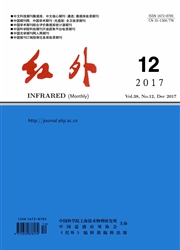

 中文摘要:
中文摘要:
This paper established a geophysical retrieval algorithm for sea surface wind vector, sea surface temperature, columnar atmospheric water vapor, and columnar cloud liquid water from WindSat, using the measured brightness temperatures and a matchup database. To retrieve the wind vector, a chaotic particle swarm approach was used to determine a set of possible wind vector solutions which minimize the difference between the forward model and the WindSat observations. An adjusted circular median filtering function was adopted to remove wind direction ambiguity. The validation of the wind speed, wind direction, sea surface temperature, columnar atmospheric water vapor, and columnar liquid cloud water indicates that this algorithm is feasible and reasonable and can be used to retrieve these atmospheric and oceanic parameters. Compared with moored buoy data, the RMS errors for wind speed and sea surface temperature were 0.92 m s-1 and 0.88℃, respectively. The RMS errors for columnar atmospheric water vapor and columnar liquid cloud water were 0.62 mm and 0.01 mm, respectively, compared with F17 SSMIS results. In addition, monthly average results indicated that these parameters are in good agreement with AMSR-E results. Wind direction retrieval was studied under various wind speed conditions and validated by comparing to the Quik SCAT measurements, and the RMS error was 13.3?. This paper offers a new approach to the study of ocean wind vector retrieval using a polarimetric microwave radiometer.
 英文摘要:
英文摘要:
This paper established a geophysical retrieval algorithm for sea surface wind vector, sea surface temperature, columnar atmospheric water vapor, and columnar cloud liquid water from WindSat, using the measured brightness temperatures and a matchup database. To retrieve the wind vector, a chaotic particle swarm approach was used to determine a set of possible wind vector solutions which minimize the difference between the forward model and the WindSat observations. An adjusted circular median filtering function was adopted to remove wind direction ambiguity. The validation of the wind speed, wind direction, sea surface temperature, columnar atmospheric water vapor, and columnar liquid cloud water indicates that this algorithm is feasible and reasonable and can be used to retrieve these atmospheric and oceanic parameters. Compared with moored buoy data, the RMS errors for wind speed and sea surface temperature were 0.92 m s~(-1) and 0.88℃, respectively. The RMS errors for columnar atmospheric water vapor and columnar liquid cloud water were 0.62 mm and 0.01 mm, respectively, compared with F17 SSMIS results. In addition, monthly average results indicated that these parameters are in good agreement with AMSR-E results. Wind direction retrieval was studied under various wind speed conditions and validated by comparing to the Quik SCAT measurements, and the RMS error was 13.3?. This paper offers a new approach to the study of ocean wind vector retrieval using a polarimetric microwave radiometer.
 同期刊论文项目
同期刊论文项目
 同项目期刊论文
同项目期刊论文
 期刊信息
期刊信息
